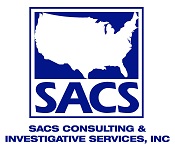Has your organization planned for business continuity in the event of a disaster? Is your organization ready to keep helping customers and/or clients, delivering products/services if an unforeseen scenario arises? If not, you better get one ASAP! If you aren’t ready to keep your “doors open” when a disaster occurs, be prepared to lose customers, contracts and partnerships to your competition.
With HR Procedures for Business Continuity, SACS Consulting & Investigative Services, Inc. can help prepare for the inevitable disaster. We can help you determine:
- Next steps in direct relation to specific disasters your organization might encounter
- Contingency plans for delivering goods or services to customers/clients
- Alternative methods of communication or points of contact for specific situations
5 Continuity Dangers
- Cyberattacks.
Many concerns include Denial of Service (DDoS), phishing, viruses, and ransomware.What you can do: Keeping your Operating Systems, applications, malware systems, and router firmware up-to-date can help. Training employees about phishing methods and establishing a cybersecurity policy is good, too. Hiring a cybersecurity company to assess your system and monitor and prevent risks should be seriously considered. - Adverse Weather.
The inclement weather season is upon us. Hurricanes, tornados, and flooding are of major concern to businesses everywhere. If you have a brick-and-mortar location, they can put you out of commission for several days to several months.What you can do: Put your mission-critical information in the cloud. Look into coworking spaces or be ready to set up work-from-home solutions. - Utility Interruptions.
Imagine a day at work when your electricity, telephone line, or water goes out. Or all three go out at the same time.What you can do: Installing a generator for electrical needs is undoubtedly an option. In addition, you can configure a VOIP telephone system that is accessible anywhere. Lack of water, garbage collectors, going on strike, or pipeline problems will cause employees to move to another location to complete their work. Determine what your plan is, put it in your procedures, and convey the plan to the workforce. - Security Incidents.
An active shooter enters the building, or an unauthorized person gains access.You can establish a policy to deal with an active shooter, including regular employee training. Ascertain better security procedures (i.e., badges, codes, and even facial recognition) to keep employees or visitors away from areas they have no reason to be in. Consider doing a yearly physical security audit to determine any building vulnerabilities. - Fires.
Whether accidental or intentional, fires usually destroy everything on-premise.You can keep your asset inventory up-to-date to allow for a speedy claim with your insurance company. Back up your data daily and store the hard drive offsite. Call your technology partner and let them know what equipment you need and where you need it.
Keep your business up and running in a time of disaster with an HR Procedure for Business Continuity. Contact us to speak with one of our HR Procedure specialists today!
